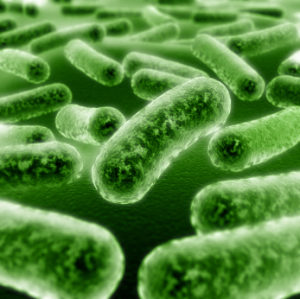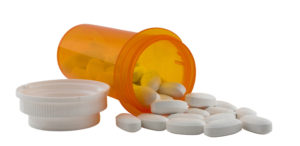 Recently the NFL Players Association called for all 30 NFL stadiums to use natural grass rather than synthetic or artificial turf. The reason given is that artificial turf causes "unnecessary injuries" in football players.
Recently the NFL Players Association called for all 30 NFL stadiums to use natural grass rather than synthetic or artificial turf. The reason given is that artificial turf causes "unnecessary injuries" in football players.
It's true. For years, including the 2022 NFL season, there were significantly more non-contact injuries to the lower extremities (e.g., ACL tears) on synthetic turf than on natural grass. By the way, the FIFA World Cup soccer association always requires a grass playing field.
But there are also other compelling reasons to not use synthetic turf - all the toxic chemicals in it. Carcinogens (e.g., cancer-causing chemicals), endocrine disruptors, "forever chemicals" (e.g., PAHs), neurotoxicants. Study after study shows that these chemicals leach out into the environment, as well as on the people playing on the turf. And yes, it is thought they cause harmful health effects, such as cancer - but the studies have not been done.
Children playing on these synthetic fields are at highest risk - they inhale the chemicals being released from the tur, get it on their skin, and ingest tiny particles. The synthetic turf also heats up excessively in hot sunny weather - from 140 to 170 degrees F. (Grass rarely heats up more than 100 degrees F.)
The following are some good articles on this topic:
Moms Clean Air Force (non-profit group working on air quality issues): Artificial Grass Isn’t Always Greener: Toxic Chemicals in Synthetic Turf
For health information about the chemicals, and tips to reduce risks if you or your child plays on synthetic turf. From The Icahn School of Medicine at Mt. Sinai: Artificial Turf Health Risks
Great (and easy to read) reports on artificial turf from the non-profit research group Environment and Human Health. Main page (scroll down) on artificial turf articles. Good article: Synthetic Turf Report: Industry's Claims Versus the Science (Hint: they explain how the synthetic turf industry lies and distorts)
From Beyond Pesticides: Sports World Rejects Synthetic Turf, Favors Natural Grass as Organic Offers Safe Alternatives

 Over the years I've received many questions about vegan versus kimchi that contains seafood. Are the microbes in the kimchi the same?
Over the years I've received many questions about vegan versus kimchi that contains seafood. Are the microbes in the kimchi the same? Erectile dysfunction is a serious problem for many men, especially as they get older. A
Erectile dysfunction is a serious problem for many men, especially as they get older. A  We have microbiomes all over our bodies. Millions of microbes in communities - for example, the ear, the sinuses, the skin, the gut, and on and on. Women also have a vaginal microbiome. When the microbiome of the vagina gets disrupted, health effects such as bacterial vaginosis (BV) can occur.
We have microbiomes all over our bodies. Millions of microbes in communities - for example, the ear, the sinuses, the skin, the gut, and on and on. Women also have a vaginal microbiome. When the microbiome of the vagina gets disrupted, health effects such as bacterial vaginosis (BV) can occur. Many consumers don't realize it, but some (many?) of the countries that flood the US market with "organic" foods are actually committing fraud. The so-called organic foods are not organic, but are conventionally grown and the documents saying they are organic have been purchased for a price.
Many consumers don't realize it, but some (many?) of the countries that flood the US market with "organic" foods are actually committing fraud. The so-called organic foods are not organic, but are conventionally grown and the documents saying they are organic have been purchased for a price. It turns out that the fabric used to make clothing is doused with all sorts of chemicals. Synthetic fabrics, fabrics dyed with azo dyes, and all fabrics treated to be stain repellant, anti-mold, anti-odor, wrinkle free, easy care, water resistant, flame retardant are the worst. Alden Wicker's
It turns out that the fabric used to make clothing is doused with all sorts of chemicals. Synthetic fabrics, fabrics dyed with azo dyes, and all fabrics treated to be stain repellant, anti-mold, anti-odor, wrinkle free, easy care, water resistant, flame retardant are the worst. Alden Wicker's  We've known for a while that exercise and physical activity lower the risk of developing heart disease. It turns out that a good exercise that many of us do in the course of ordinary life is walking up and down stairs. Yes, that counts!
We've known for a while that exercise and physical activity lower the risk of developing heart disease. It turns out that a good exercise that many of us do in the course of ordinary life is walking up and down stairs. Yes, that counts! Americans take a lot of prescription drugs, so many that it has reached historic highs. 6.3 billion prescriptions were filled in 2020! According to a recent study, it appears that the number of prescription drugs a person takes over the life span will only increase.
Americans take a lot of prescription drugs, so many that it has reached historic highs. 6.3 billion prescriptions were filled in 2020! According to a recent study, it appears that the number of prescription drugs a person takes over the life span will only increase. There is tremendous interest in how to live a long and healthy life. This means trying to avoid getting diseases that so many suffer from as they age, such as diabetes, heart disease, and dementia. What diets are best? What kind of lifestyle?
There is tremendous interest in how to live a long and healthy life. This means trying to avoid getting diseases that so many suffer from as they age, such as diabetes, heart disease, and dementia. What diets are best? What kind of lifestyle? There has been tremendous interest in the past decade over the best diet and lifestyle for aging well and living to a ripe old age. Author Dan Buettner has spent much of the past decade visiting communities around the world where there are many residents who live to 100 years or more, and in good health. He calls these communities blue zones.
There has been tremendous interest in the past decade over the best diet and lifestyle for aging well and living to a ripe old age. Author Dan Buettner has spent much of the past decade visiting communities around the world where there are many residents who live to 100 years or more, and in good health. He calls these communities blue zones.